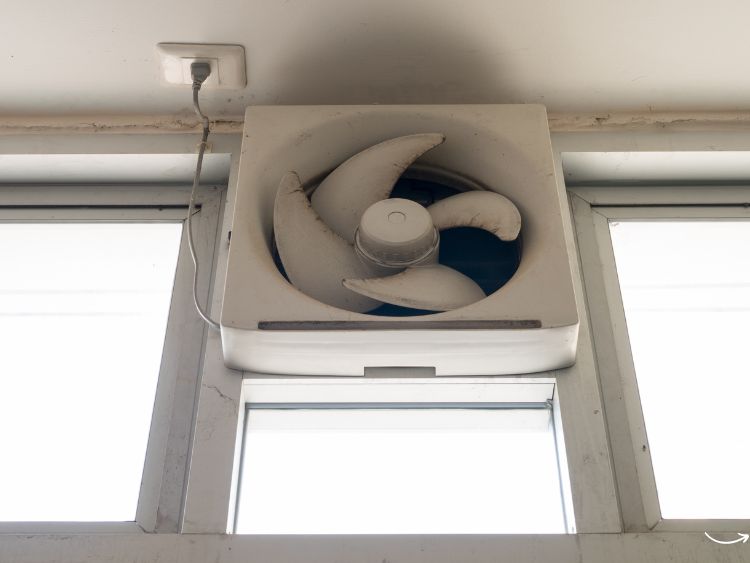Ah, the wonders of proper ceiling ventilation! If you’ve ever found yourself wondering why your living space feels stuffy or why there’s condensation on your walls, the answer might lie above you. Ventilation for ceilings isn’t just about comfort; it’s about creating a healthy environment in your home. Let’s dive into the world of ceiling ventilation and uncover why it’s crucial, how it works, and the best practices for installing it.
Why is Ceiling Ventilation Important?
Proper ceiling ventilation is essential for several reasons. First and foremost, it helps to regulate indoor temperatures, ensuring that your home stays cool in the summer and warm in the winter. Additionally, it prevents moisture buildup, which can lead to mold growth and structural damage. Here’s a closer look at the benefits:
- Temperature Regulation: Ventilation systems help circulate air, preventing hot air from getting trapped in your ceiling. This makes your HVAC system more efficient, ultimately reducing energy costs.
- Moisture Control: By allowing air to flow freely, ceiling ventilation reduces the risk of condensation and the associated problems like mold and mildew.
- Air Quality: Ventilation helps to expel indoor pollutants and bring in fresh air, improving the overall air quality in your home.
- Structural Integrity: Moisture can weaken your home’s structure over time. Proper ventilation helps to keep your home dry and maintain its integrity.
Types of Ceiling Ventilation Systems
There are various types of ceiling ventilation systems, each with its own set of advantages. Here are some of the most common ones:
1. Passive Ventilation
Passive ventilation relies on natural forces like wind and thermal buoyancy to circulate air. It includes:
- Ridge Vents: Installed along the peak of your roof, ridge vents allow hot air to escape from your attic.
- Soffit Vents: Located under the eaves of your roof, soffit vents let cool air enter the attic.
- Gable Vents: Placed on the gable ends of a home, these vents facilitate cross-ventilation by allowing air to flow in and out.
2. Mechanical Ventilation
Mechanical ventilation uses fans and other devices to move air. It includes:
- Exhaust Fans: These fans are usually installed in bathrooms and kitchens to expel moisture and odors directly outside.
- Whole-House Fans: Installed in the attic, these fans pull cool air from outside into your home, pushing hot air out through roof vents.
- HVAC Systems: These systems often include integrated ventilation options that ensure a constant exchange of indoor and outdoor air.
How to Choose the Right Ventilation for Your Ceiling
Selecting the right ceiling ventilation system depends on various factors, including your home’s design, climate, and specific needs. Here’s a step-by-step guide to help you make an informed decision:
- Assess Your Needs: Determine the primary reasons for needing ventilation. Is it to reduce heat, control moisture, or improve air quality?
- Evaluate Your Home’s Structure: The type of roof and attic space you have can significantly influence the type of ventilation system that will work best.
- Consider the Climate: In hotter climates, a combination of passive and mechanical ventilation might be necessary to keep your home cool.
- Energy Efficiency: Opt for systems that are energy-efficient to save on utility bills.
- Professional Consultation: Consult with a professional to ensure that the system you choose is correctly sized and installed.
Installation Tips for Ceiling Ventilation
Proper installation is key to ensuring your ventilation system works efficiently. Here are some tips to keep in mind:
- Follow Manufacturer Guidelines: Always adhere to the manufacturer’s instructions for installation to ensure optimal performance.
- Ensure Proper Placement: The placement of vents and fans is crucial. For passive systems, ensure there’s a balance between intake and exhaust vents.
- Seal Gaps and Leaks: Ensure that your attic is well-sealed to prevent air leaks, which can reduce the effectiveness of your ventilation system.
- Regular Maintenance: Periodically check your vents and fans to ensure they’re clean and functioning correctly.
FAQs about Ceiling Ventilation
Q: How often should I inspect my ceiling ventilation system?
A: It’s advisable to inspect your ceiling ventilation system at least twice a year—once in the spring and once in the fall.
Q: Can I install a ceiling ventilation system myself?
A: While some systems can be DIY projects, it’s often best to hire a professional to ensure proper installation and efficiency.
Q: How do I know if my home needs better ventilation?
A: Signs that you might need better ventilation include high indoor temperatures, condensation on windows, musty odors, and visible mold growth.
Conclusion
Ventilation for ceiling isn’t just a nice-to-have; it’s a must-have for maintaining a comfortable, healthy home. From improving air quality to protecting your home’s structure, the benefits of proper ceiling ventilation are clear. Whether you choose passive or mechanical ventilation, ensuring that your system is well-chosen and correctly installed will pay off in the long run. So, take a deep breath, and make sure your home is as comfortable and healthy as it can be!
By following these guidelines and understanding the importance of ceiling ventilation, you’ll be well on your way to creating a more pleasant living environment. And remember, if you ever feel out of your depth, don’t hesitate to consult a professional. Here’s to a well-ventilated home and a happier, healthier life!
